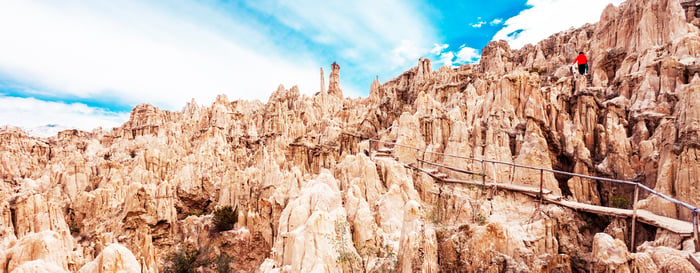A line of forbidding Chinese warriors greet you as you walk into the Tay Guan Heng workshop.
Baking in the tropical heat on wooden racks, the giant gingerbread-coloured joss sticks are waiting for their next moment in the sun. They will be painted in an array of colours and then burnt at a temple in Singapore.
Albert and Amos Tay, who are both in their 60s, are two of the last giant joss makers in Singapore. The third generation of their family to run the business, the brothers are now starting to accept the idea that when they retire, the business will close with them.
Although today, the workshop is a hive of activity as they are getting ready for their busiest time of the year, the Hungry Ghost Festival. From August to September, Taoist worshippers throughout Singapore pay homage to their ancestors by burning joss sticks.
 Made from wild cinnamon wood, the giant joss sticks that line the Tay Guan Heng workshop are like mini sculptures. Swirling blue clouds burst forth from golden backdrops and colourful three-dimensional dragons wrap their tails around the incense. While a platoon of what look like technicolour Roman Standards form a line along the wooden staircase.
Made from wild cinnamon wood, the giant joss sticks that line the Tay Guan Heng workshop are like mini sculptures. Swirling blue clouds burst forth from golden backdrops and colourful three-dimensional dragons wrap their tails around the incense. While a platoon of what look like technicolour Roman Standards form a line along the wooden staircase.
Seen as a direct line to the heavens, the taller the joss stick, the closer the worshipper is to heaven.
Worshippers would burn up to 25 joss sticks at a time that were as high as three storey buildings, but the tallest now measures two metres after the Singaporean government stepped in to help curb air pollution.
It takes them a few days to make the joss stick. The fibrous cinnamon sawdust becomes a bread-like dough when they add water and they place this into a mould. After shaping the joss stick then need to be left to dry for a couple of days before they spray and hand-paint them. The finer sawdust they save for figurines, the coarser sawdust they use for joss sticks as they need air into the joss sticks to help them burn. Once lit, their hard work will burn away within 12 to 16 hours. “It’s a bit sad to know that,” says Amos, “but without that we don’t have any money.”
 The colour of the joss stick gives it its own meaning – red, yellow, green, white, black, represent the five guards of heaven. When they are praying to the heavens worshippers burn an odd number (one, three, five, seven…) and when they are praying to their ancestors they burn two at a time. The largest joss sticks can cost up to SGD$500 each.
The colour of the joss stick gives it its own meaning – red, yellow, green, white, black, represent the five guards of heaven. When they are praying to the heavens worshippers burn an odd number (one, three, five, seven…) and when they are praying to their ancestors they burn two at a time. The largest joss sticks can cost up to SGD$500 each.
The small group of tourists who are visiting the shop today are intrigued by the incense and all its meanings. But this is where the interest ends says Albert: “We show people our work, but they just come for fun. They don’t want to come into the trade. This trade, you need to start young.”
While Albert is one of eight brothers, no other younger member of the family wants to take it over. His own sons have chosen other trades, including the fitness industry. Albert is a gentle man who laughs easily and seems to bear no hard feelings.
However, wistfully, Albert remembers when his father ran the business from a shophouse in Little India: “My dad would be running the business in the front and the living quarters in the back. When we came back from school, we would play around him as he worked. Those are my first memories of the shop. The moments of family bonding.” When they got a little older they would help him paint the joss sticks. “It was a very tedious job. We would hand-paint everything.”


Then when they were a little older their father showed them how to sculpt the figurines. “When we were younger in Little India there were a lot of gangs and violence,” says Amos. “My father taught us how to do this to keep us off the streets. It was our Play-Doh (laughs).”
Amos then deftly shows just some of the skills that his father taught him. Choosing a half-finished figurine from the shelves, he rolls out a piece of cinnamon wood clay so it looks like leather, then with one swift move, drops it over the arm of the figurine so it looks like folds in the fabric of a traditional Chinese outfit. He then creates an arm and hand in a matter of seconds using a thin roll of cinnamon clay. He presses the tapered end of the clay with his thumb to create a hand, makes one cut to create a thumb, pushes it again to create a palm and then adds three more quick cuts to create fingers before he threads it on the wire and hay base.
The joss sticks are created for the Chinese community, but the figurines became popular with other communities in Singapore. When their father left them drying outside his shop in Little India people asked if they could buy them, so they started adding the joss stick sculptures to plaques and they became a business of their own.
When he sons took over they diversified again creating buys for other communities, such as Nativity sets, Christmas decorations and gingerbread houses. They also take bespoke orders, which in some cases have proved to be a challenge. “We were asked to make a Lynx character inspired by the Atari computer game. We were also asked to make a Star Wars character,” says Amos.
 The brothers also introduced spray painting when we took over the business 20 years ago. “It was trial and error – no one would teach us,” says Albert. “They started by just spray-painting the base colour white, then as their skills improved they started spray painting the top colours.”
The brothers also introduced spray painting when we took over the business 20 years ago. “It was trial and error – no one would teach us,” says Albert. “They started by just spray-painting the base colour white, then as their skills improved they started spray painting the top colours.”
There was no resistance from their father to the new way of doing things. “Our father was very proud as it was quicker and we could get more done,” laughs Albert.
They also recently started welcoming small groups of visitors to the workshop to take one last glance at this vanishing trade.
At the moment the brothers are all in good health and the order book looks healthy. “We work as long as we are still healthy,” says Albert. But as the small tourist group leaves the workshop, Albert says sadly, “We like to show people something that is different in Singapore. I feel bad when we are old, we can’t carry on and nobody takes over. It will be a loss to the community.”
The Lightfoot Team can recommend the best hotels and experiences in Singapore. Let us help you experience Singapore with a tailor-made itinerary that suits you. Enquire now!
Classic Cambodia
Siem Reap Phnom Penh Cambodia's Coast
- Witness Angkor Wat’s majestic stone carvings and bas-reliefs
- Enjoy a champagne breakfast overlooking Srah Srong – the 900-year-old man-made lake
- Watch an evening performance of ‘Phare, the Cambodian Circus’, set up by returnee Cambodians from the refugee camps
- Take in the sights of Phnom Penh on a fun guided Cyclo ride
- Spend time helping out with local community projects at the island resort of Song Saa
Summer in Hokkaido
-
Explore the wild and beautiful flora of Kiritappu Wetland
-
Visit the mysterious and desolate landscape of Todowara
-
See Japan brown bears on a cruise along the Shiretoko peninsula
-
Explore Mt. Meakan, the forests of Kawayu Onsen, and meet the Ainu people
-
Hike around the base of Mt Asahidake amongst ponds and wild flowers








